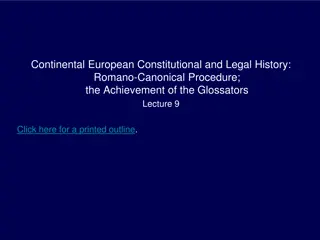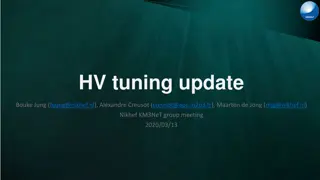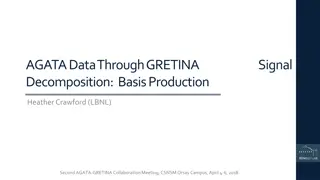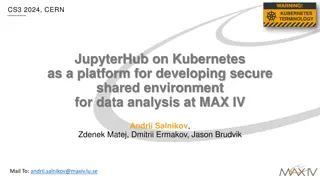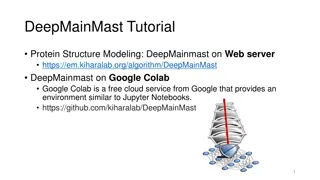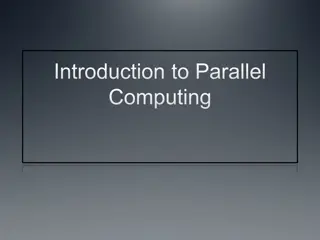Accelerated Hypergraph Coarsening Procedure on GPU
An accelerated procedure for hypergraph coarsening on the GPU, presented by Lin Cheng, Hyunsu Cho, and Peter Yoon from Trinity College, Hartford, CT, USA. The research covers hypergraph coarsening, implementation challenges, runtime task planning, hypergraph nodes, hypergraph partitioning, image classification, hypergraph construction, and the Mondriaan algorithm for node similarity. The study focuses on reducing the number of nodes by fusing them, improving image categorization, and enhancing hypergraph construction efficiency.
- Hypergraph Coarsening
- GPU Computing
- Image Classification
- Mondriaan Algorithm
- Hypergraph Partitioning
Download Presentation

Please find below an Image/Link to download the presentation.
The content on the website is provided AS IS for your information and personal use only. It may not be sold, licensed, or shared on other websites without obtaining consent from the author. Download presentation by click this link. If you encounter any issues during the download, it is possible that the publisher has removed the file from their server.
E N D
Presentation Transcript
An Accelerated Procedure for Hypergraph Coarsening on the GPU Lin Cheng, Hyunsu Cho, and Peter Yoon Trinity College Hartford, CT, USA
Outline Hypergraph coarsening Implementation challenges Runtime task planning Results
Hypergraph Nodes Hyperedges (nets) Subsets of nodes e1 e2 v2 v1 v3 e3 v4 v5 v6
Hypergraph Hypergraph partitioning Minimize edge cut Balance constraint NP-complete e1 e2 v2 v1 v3 e3 v4 v5 v6
Image classification Similar images should go to same category Need to compare images to one another
Hypergraph construction Compare multiple pictures at a time
Hypergraph coarsening Heuristic: reduce # nodes by fusing e1 e2 v2 v1 v3 6 nodes e3 v4 v5 v6
Hypergraph coarsening Heuristic: reduce # nodes by fusing e1 e2 v2v3 v1 3 nodes v4 e3 v5v6
Mondriaan algorithm Given a node, find most similar neighbor Similarity = # hyperedges containing both v2 Affinity = 2 v3
Mondriaan algorithm Given a node, find most similar neighbor Similarity = # hyperedges containing both Nodes Binary sparse matrix Edges Member? (T/F)
Mondriaan algorithm Given a node, find most similar neighbor Similarity = # hyperedges containing both 1. Find edges containing v3
Mondriaan algorithm Given a node, find most similar neighbor Similarity = # hyperedges containing both 1. Find edges containing v3 2. Collect nonzeros
Mondriaan algorithm Given a node, find most similar neighbor Similarity = # hyperedges containing both 2 3. Inspect column index of each nonzero
Mondriaan algorithm Given a node, find most similar neighbor Similarity = # hyperedges containing both 2 2 1 2 1 Similarity scores 3. Inspect column index of each nonzero
Mondriaan algorithm Parallel algorithm: Inspect edges in parallel 2 2 1 2 1 Thread 0 Thread 1 Thread 2
GPU as parallel accelerator NVIDIA GPUs : organized in warps 32 threads share one instruction counter LOAD A[*] INTO X X (register) A[*] (memory)
Warp divergence Thread 0-9: LOAD A[0-9] INTO X 3 8 9 0 1 2 4 5 6 7 X A[*]
Warp divergence Thread 0-4: LOAD A[0-4] INTO X Thread 5-9: NONE 3 8 9 0 1 2 4 5 6 7 X A[*]
Warp divergence Thread 0-4: LOAD A[0-4] INTO X Thread 5-9: NONE 3 8 9 0 1 2 4 5 6 7 X A[*] stalled
Warp divergence Serializes execution Caused by load imbalance Sparse/irregular data
Mondriaan algorithm A na ve strategy results in load imbalance Nonzero entry = workload 2 2 1 2 1 6 Thread 0 3 Thread 1 Thread 2 2
SHFL to the rescue Compiler primitive Shuffles content of adjacent registers x=shfl_down(x,2)
SHFL to the rescue Compiler primitive Shuffles content of adjacent registers Single machine instruction Warp-synchronous; no sync. needed after x=shfl_down(x,2)
Runtime planning with SHFL 6 Thread 0 3 Thread 1 Thread 2 2
Runtime planning with SHFL Prefix sum 6 0 Thread 0 3 6 Thread 1 Thread 2 9 2 11
Runtime planning with SHFL Prefix sum 6 0 Thread 0 3 6 Thread 1 Thread 2 9 2 11 ceil(11 / 3) = 4
Runtime planning with SHFL Range 6 0 3 Thread 0 4 7 3 Thread 1 8 10 Thread 2 2 11 ceil(11 / 3) = 4
Runtime planning with SHFL Range 0 3 Thread 0 Equal # of nonzeros 4 7 Thread 1 8 10 Thread 2
Runtime planning with SHFL Range 2 2 1 2 1 0 3 Thread 0 4 7 Thread 1 8 10 Thread 2
Results NVIDIA Tesla K20c (5GB mem) Intel Xeon E5-2620 Reference sequential implementation of Mondriaan
Results: long-tailed distribution flickr wikipedia 1.E+04 1.E+05 GPU: 59 s Seq. : 877 s 15 x speed-up GPU: 50 s Seq. : 811 s 16 x speed-up Y-axis: # of nonzeros in columns, descending, log-scale
Results: non-long-tailed distribution stanford-berkeley 1.E+03 stanford 1.E+03 GPU: 146 s Seq. : 65 s 0.45 x GPU: 626 s Seq. : 41 s 0.07 x Y-axis: # of nonzeros in columns, descending, log-scale
Analysis of results Good speedup for data with long-tailed distribution of nonzeros
Analysis of results Good speedup for data with long-tailed distribution of nonzeros Synthetic data First 1,000 columns : 100,000 nonzeros each Next 699,000 columns : all zero Speedup: 123 x
Analysis of results Most nodes sparsely connected ( << 32 edges) Now: one warp, one instance of Mondriaan 2 2 1 2 1 Thread 0 Thread 1 What if this column has < 32 nonzeros? Thread 2
Work in progress Pool multiple instances of Mondriaan into warp 2 1 2 2 1 2 1 1 2 1 Thread 0 Thread 1 Thread 2
Conclusion Implemented hypergraph algorithm handling arbitrary connectivity patterns Explored SHFL for task planning Future work: more flexible allocation strategy
Acknowledgment Trinity College: Student Research Program NVIDIA: CUDA Teaching Center
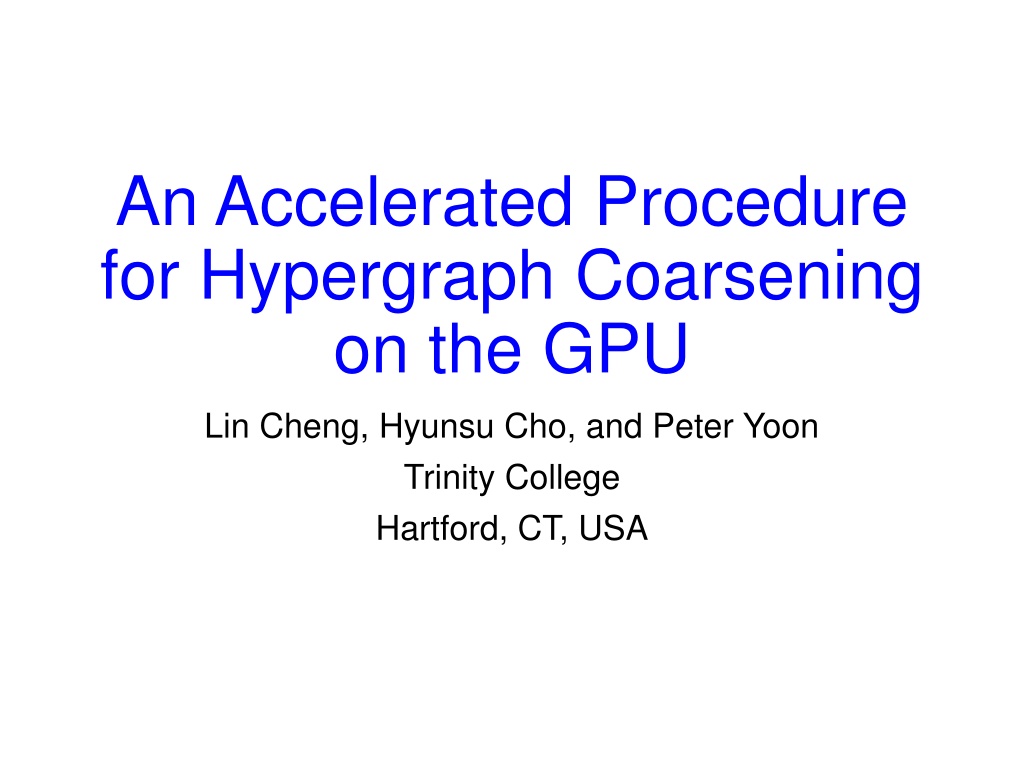

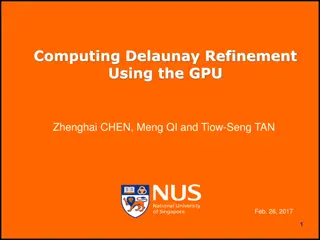
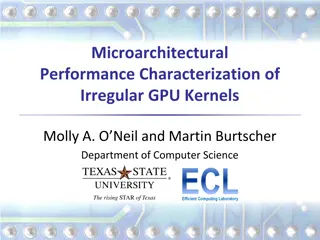
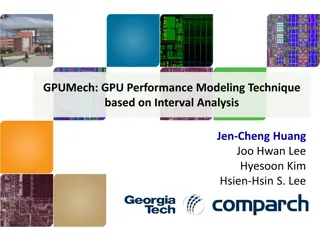

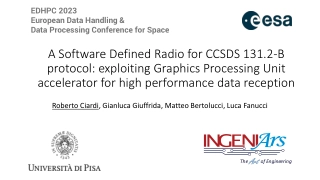


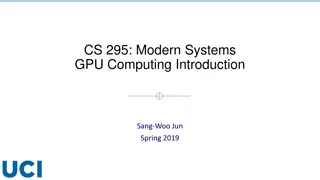

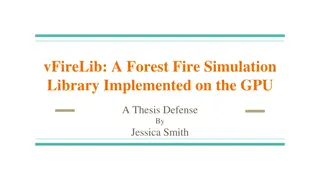
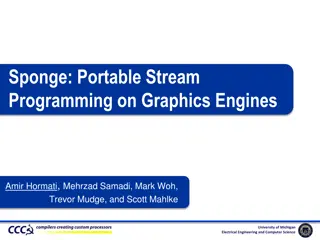



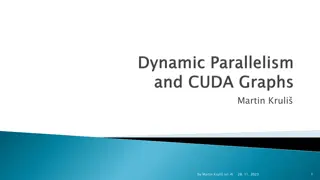
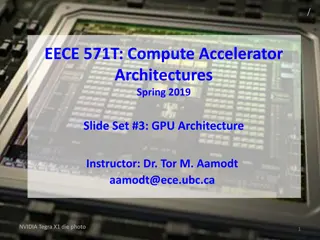
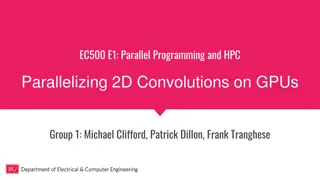

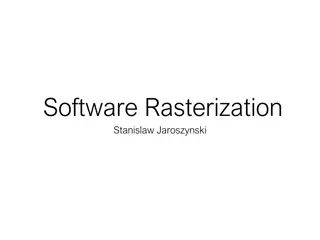
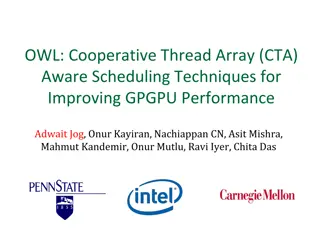
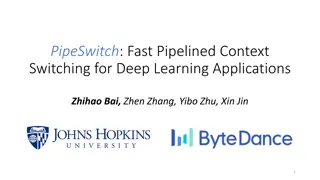
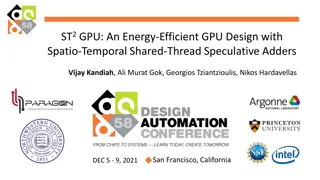
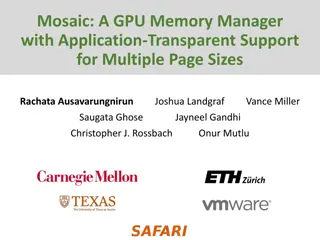
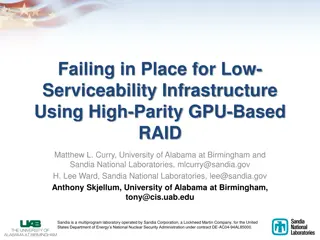




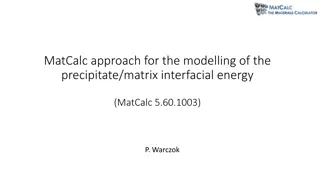


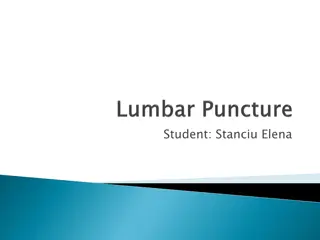

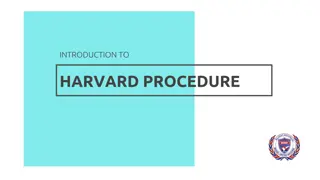

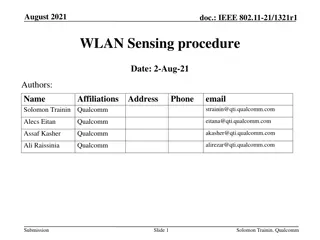

![Briefing on the Criminal Procedure Amendment Bill [B12-2021] to the Portfolio Committee on Justice and Correctional Services](/thumb/157093/briefing-on-the-criminal-procedure-amendment-bill-b12-2021-to-the-portfolio-committee-on-justice-and-correctional-services.jpg)
